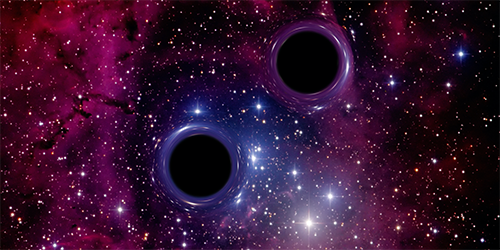Seeing Gravitons in Colliding Gravitational Waves
If gravity and quantum mechanics are to be unified, gravitational waves—usually studied as a classical phenomenon using general relativity—must comprise hypothesized particles called gravitons. In theory, gravitons can interact with each other to produce photons, but these interactions were thought to be vanishingly rare and impossible to detect. In new theoretical work, Raymond Sawyer of the University of California, Santa Barbara, finds that in certain cases, colliding gravitational waves could produce enough radio frequency photons to yield a detectable signal.
Sawyer built a simplified model in which two gravitational waves interact—such as might happen during a binary black hole merger. The model describes each gravitational wave as a beam of 64 to 1024 gravitons and calculates the likelihood of them converting to photons as the collision progresses. Sawyer simulated more intense gravitational waves containing up to a billion gravitons using a less computationally demanding semiclassical model that averages out the gravitons’ properties.
Both models predict that gravitational-wave collisions can produce large numbers of radio photons, but only if some photons with a specific wavelength and phase are already included in the initial graviton beams. Sawyer found that the conversion process proceeds exponentially after a characteristic interval called the “quantum break” time and that this interval is longer for more intense gravitational waves.
Sawyer thinks that detecting the photon signature of gravitational-wave collisions would likely require a space-based radio observatory. He also estimates that the binary black hole mergers detected so far have unfolded about 10 times too quickly for this quantum break to occur. Detailed modeling using supercomputers could help find the best way to observe these effects, Sawyer says.
This research is published in Physical Review Letters.
–Sophia Chen
Sophia Chen is a freelance science writer based in Tucson, Arizona.





